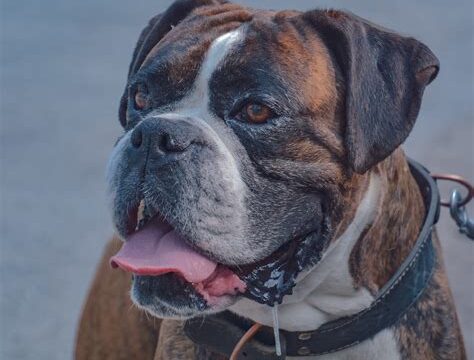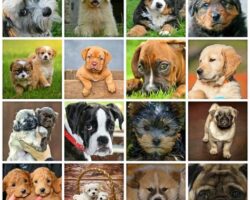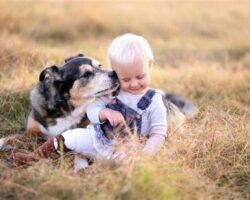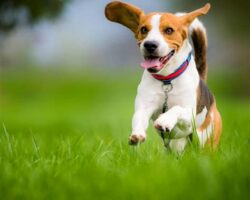Discover the causes of excessive drooling in dogs, health concerns, and training tips to manage it. Learn when to seek veterinary help.
Common drooling dog breeds
Do you often find your floors and furniture covered in slobber? It might be because you have a drooling dog breed! Drooling is a natural and common behavior in some dog breeds, and can be quite messy. Some of the most common drooling dog breeds include the Saint Bernard, Bullmastiff, and Bloodhound.
These breeds have loose, droopy lips that often result in excessive drooling, especially after eating or drinking. While not all members of these breeds will drool excessively, it is certainly something to be aware of if you are considering adding one of these breeds to your family. It’s important to note that drooling can also be influenced by individual differences, so not all dogs of these breeds may exhibit this behavior.
If you have a drooling dog breed, it’s important to keep towels and drool cloths handy to clean up messes. Additionally, regular grooming and dental care can help minimize excessive drooling in these breeds, so it’s important to stay on top of their hygiene needs to keep them as comfortable as possible.
Causes of excessive drooling
Drooling Dog Breeds: What to Expect
Excessive drooling in dogs can be caused by a variety of factors, including breed predisposition, dental issues, heat, excitement, or illness. Some breeds are simply more prone to drooling due to their anatomy and genetics. Breeds such as St. Bernards, Bloodhounds, and Bulldogs are known for their excessive drooling tendencies.
Dental problems, such as gum disease or a stuck object in the mouth, can also cause a dog to drool more than usual. If your dog is drooling excessively, it’s important to check for any signs of oral discomfort or foreign objects that may be causing the issue.
Health issues such as heat stroke, nausea, or certain diseases can also lead to increased drooling in dogs. It’s important to monitor your dog’s drooling behavior and seek veterinary care if you notice any concerning changes.
Health concerns related to drooling
Health concerns related to drooling
Drooling is a common occurrence in dogs, especially in certain breeds that are prone to excessive salivation. While some drooling is normal, it can sometimes be a sign of underlying health concerns that require attention.
One common health concern related to excessive drooling in dogs is dental issues. Poor dental hygiene can lead to gum disease, tooth decay, and oral infections, all of which can cause increased salivation. It’s important to regularly brush your dog’s teeth and provide dental treats or toys to help prevent these issues.
Another potential health concern related to drooling is respiratory problems. Certain breeds with short noses, such as Bulldogs and Pugs, are prone to respiratory issues that can lead to excessive drooling. Brachycephalic breeds often have narrowed airways, making it harder for them to breathe and leading to increased salivation. If you notice your dog struggling to breathe or experiencing other respiratory symptoms, it’s important to seek veterinary help.
Managing drooling in dogs
Managing drooling in dogs
Managing excessive drooling in dogs can be a challenging task, but with the right approach, it is possible to minimize and control this behavior. One of the first steps in managing drooling in dogs is to identify the underlying cause. Certain breeds are more prone to excessive drooling, so it is important to be aware of your dog’s breed tendencies. Additionally, dental issues, oral infections, or underlying health concerns can also contribute to excessive drooling in dogs.
Once the cause of the drooling is identified, it is important to address any underlying health concerns by seeking veterinary help. Your veterinarian can provide guidance on potential treatment options and management strategies for your dog’s drooling. In some cases, medication or surgery may be necessary to alleviate the drooling problem.
Aside from addressing any underlying health concerns, there are also strategies for managing drooling in dogs at home. Regular dental care, such as teeth brushing and dental chews, can help reduce drooling caused by dental issues. Additionally, feeding your dog smaller, more frequent meals can help minimize drooling. It is also important to monitor your dog’s environment and behaviors to identify any triggers that may be contributing to excessive drooling.
When to seek veterinary help
When to seek veterinary help
Excessive drooling in dogs can be a normal occurrence, especially in certain breeds. However, there are times when drooling can be a sign of a more serious health issue. If your dog suddenly starts drooling more than usual, or if the drool becomes thick and ropey, it may be time to seek veterinary help. These changes in drooling habits could be a sign of dental problems, oral infections, or even gastrointestinal issues. It’s important to monitor your dog’s drooling habits and seek professional help if you notice any abnormal changes.
Another situation in which you should seek veterinary help for drooling is if your dog experiences sudden drooling accompanied by other symptoms such as vomiting, diarrhea, lethargy, or loss of appetite. These symptoms could be indicative of a more serious underlying health issue such as poisoning, ingestion of a foreign object, or a potentially life-threatening condition. In such cases, it’s crucial to seek immediate veterinary assistance to ensure the well-being of your pet.
Additionally, if your dog has a history of excessive drooling that has not been diagnosed or treated, it’s important to consult with a veterinarian to rule out any underlying health concerns. Persistent, unexplained drooling could be a sign of an oral or systemic health issue that requires professional evaluation and treatment. Always trust your instincts as a pet owner, and if you feel that your dog’s drooling is abnormal or concerning, do not hesitate to schedule a visit to your veterinarian for a thorough examination and appropriate care.
Breeds with minimal drooling tendencies
When considering bringing a dog into your home, one concern that many potential pet owners have is excessive drooling. While some dog breeds are known for their slobber, there are also breeds that are much more minimal in their drooling tendencies. It’s important to understand the characteristics of different breeds and their propensity for drooling when choosing a pet that fits your lifestyle.
Some breeds that are known for minimal drooling tendencies include the Poodle, Basenji, and Greyhound. These breeds are generally not prone to excessive drooling and may be better options for individuals who are concerned about this issue. It’s also important to note that individual dogs within a breed can vary, so it’s always recommended to spend time with a specific dog before making a decision.
When looking for a dog with minimal drooling tendencies, it’s also important to consider the size and activity level of the breed. Smaller breeds such as the Bichon Frise and Shih Tzu are also known for their minimal drooling, while larger breeds such as the Great Dane and St. Bernard may have more significant drooling tendencies. Additionally, breeds that are more active and have high energy levels, such as the Border Collie and Australian Shepherd, may have less time for drooling as they are constantly in motion.
Training tips for reducing drooling
Training tips for reducing drooling
Excessive drooling can be a messy and often frustrating issue for dog owners to deal with. While some dog breeds are naturally prone to drooling, there are several training tips that can help reduce the amount of drool produced by your furry friend. By implementing consistent training methods and employing patience, it is possible to manage and reduce the amount of drool your dog produces, making for a happier and cleaner household overall.
One effective approach to reducing drooling in dogs is to provide regular dental care. Just like humans, dogs need to have their teeth brushed regularly to prevent the build-up of plaque and tartar, which can often contribute to excessive drooling. Using a dog-friendly toothbrush and toothpaste, gently brush your dog’s teeth on a daily basis to maintain a healthy mouth and potentially reduce drooling.
Another useful training tip for reducing drooling in dogs is to be mindful of their diet and feeding habits. Certain foods and treats may trigger excessive drooling in some dogs, so consider adjusting your dog’s diet to see if it has an impact on their drooling. Additionally, teaching your dog to eat and drink more slowly can help reduce drooling, as fast eating and drinking can often lead to excessive saliva production.
Frequently Asked Questions
What are some dog breeds known for drooling excessively?
Some dog breeds known for excessive drooling include the Saint Bernard, Bullmastiff, and Bloodhound.
Is excessive drooling in dogs a cause for concern?
Excessive drooling can sometimes be a sign of dental issues, heat stroke, or certain health conditions, so it’s important to monitor and address if needed.
How can excessive drooling in dogs be managed?
Regular dental care, feeding smaller meals, and keeping the dog cool in hot weather can help manage excessive drooling in dogs.
Are there any preventive measures to reduce drooling in dogs?
Keeping your dog’s mouth and teeth clean, providing proper dental care, and avoiding foods that trigger excessive saliva production can help prevent excessive drooling.
Do all drooling dog breeds require special grooming?
Not all drooling dog breeds require special grooming, but regular wiping of the mouth and cleaning of the facial folds can help prevent skin irritation and odor.
Can drooling in dogs be a sign of a more serious health issue?
Yes, excessive drooling can sometimes indicate an underlying health issue such as a foreign object stuck in the mouth, respiratory problems, or neurological disorders.
Are there any home remedies to reduce drooling in dogs?
Offering ice cubes to chew on, using specially designed feeding and water dishes, and keeping the dog’s living environment cool can help reduce drooling in dogs.





